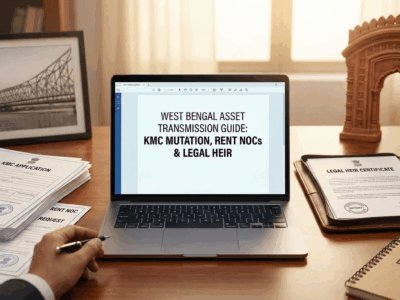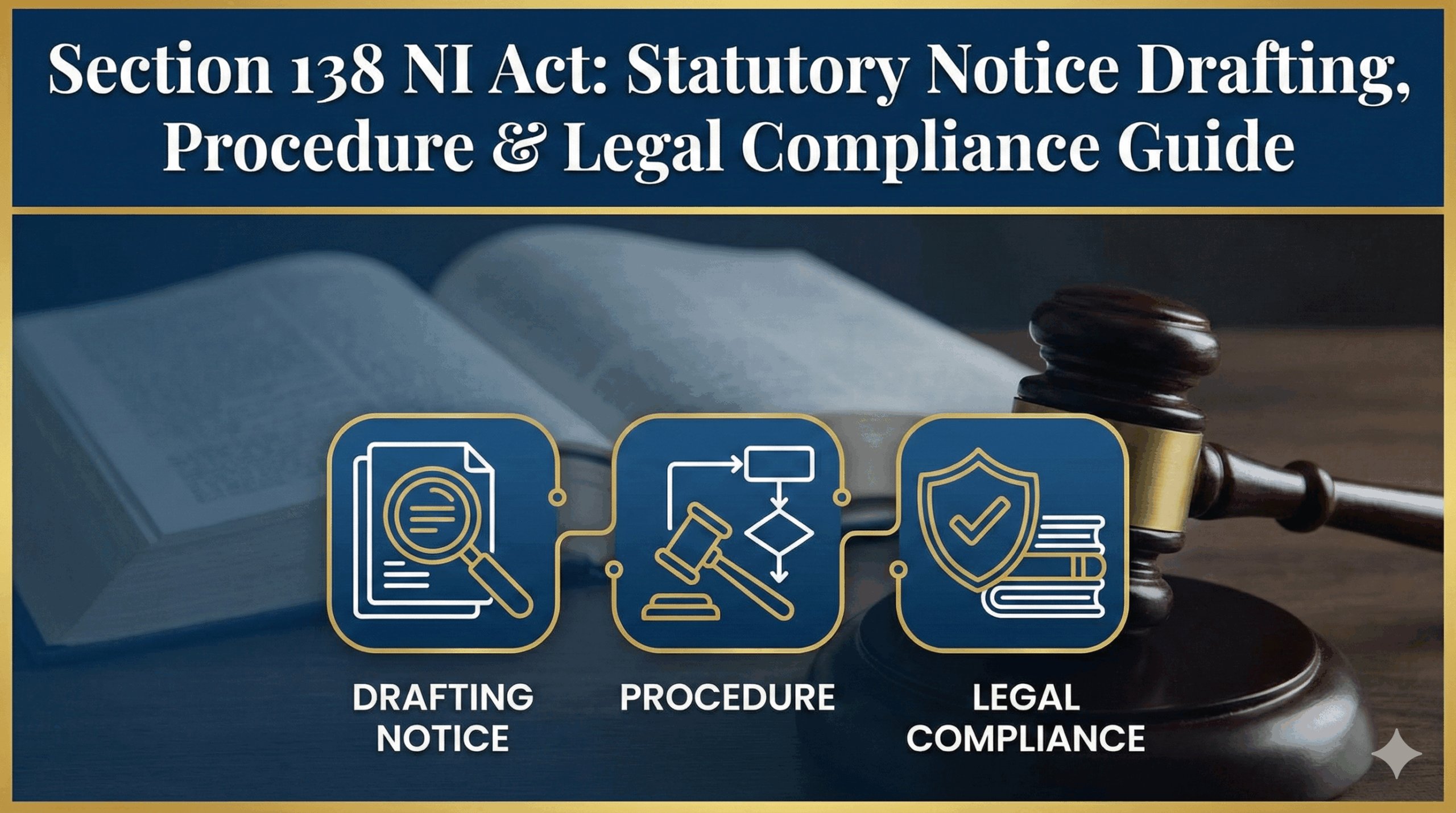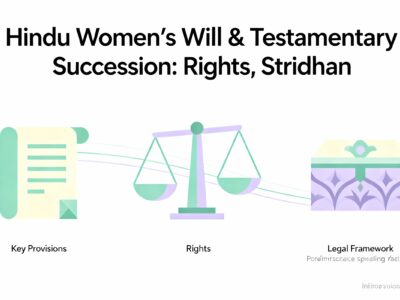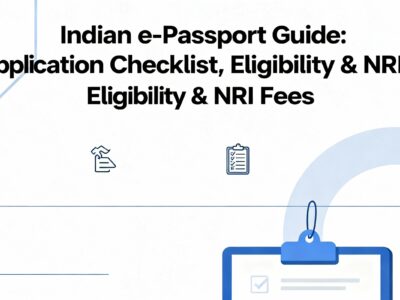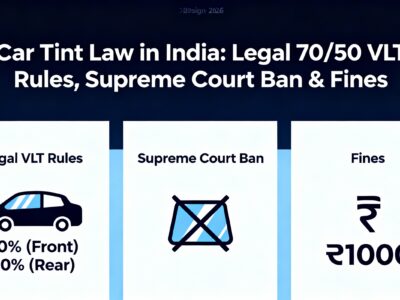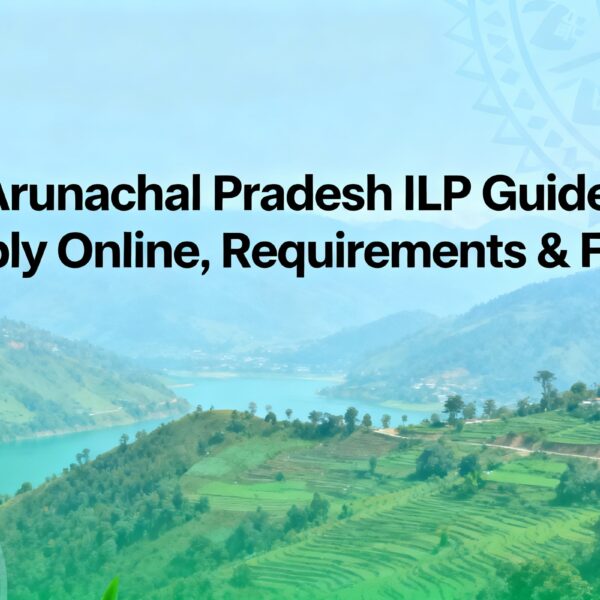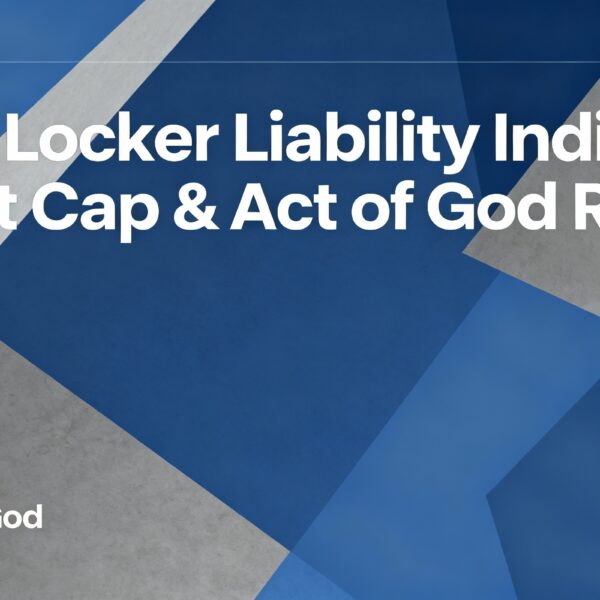Are you considering becoming a whistleblower in India but fear the consequences? Reporting unethical company practices—from financial fraud to safety violations—is a courageous act, but navigating India’s complex legal landscape can be daunting. This definitive 2025 guide from Evaakil.com is your legal compass. We provide a step-by-step process for reporting wrongdoing under the Companies Act, 2013, and SEBI regulations, explain your rights and the real-world protections against retaliation, and offer practical tools, including a complaint template, to ensure your disclosure is made safely and effectively.
A Whistleblower's Legal Compass
Navigating the Reporting of Unethical Company Practices in India
Last Updated: September 12, 2025
Whistleblower's Quick Assessment
Answer two questions to see the primary legal path for your situation.
The decision to report unethical or illegal practices within an organization is a significant act of conscience. In India, whistleblowing—exposing wrongdoing like corruption, fraud, or safety violations—is commendable but fraught with legal complexities and personal risks. The legal framework is fragmented, with a critical distinction between public and private sectors that dictates a whistleblower's entire strategic approach. This guide serves to equip you with the knowledge to report correctly, effectively, and with the greatest possible degree of self-protection.
Part I: The Legal & Regulatory Landscape
Understanding the legal foundation is the first step. India lacks a singular law, compelling individuals to navigate a patchwork of legislation. The most crucial determination is whether the wrongdoing is in the public or private sector, as this defines the applicable law, the reporting authority, and the available safeguards.
India's Whistleblowing Framework at a Glance
1.1 Public vs. Private: The Public Sector Path
Misconduct in the public sector (e.g., corruption by a government official) theoretically falls under the Whistle Blowers Protection Act, 2014. However, as the Act is not yet operational, the de facto mechanism is the **Public Interest Disclosure and Protection of Informer (PIDPI) Resolution**, which designates the **Central Vigilance Commission (CVC)** as the receiving body.
The Story of The Whistle Blowers Protection Act (WBPA)
Act Passed
Receives Presidential assent, promising a formal mechanism to protect public sector whistleblowers.
Amendment Bill
A restrictive bill is introduced (later lapsed), seeking to curtail the Act's power and prioritize the Official Secrets Act.
Still Unenforced
Over a decade later, the Act has not been officially notified, leaving it legally unenforceable.
1.2 Public vs. Private: The Private Sector Path
For the private sector, protection is embedded within corporate governance. **Section 177 of the Companies Act, 2013**, and **SEBI Regulations** mandate that certain companies establish an internal **"vigil mechanism."** This system is overseen by the company's own Audit Committee and is designed primarily to address issues internally, protecting shareholder value and market integrity.
Who Needs a Vigil Mechanism?
- All publicly listed companies.
- Companies that accept public deposits.
- Companies with borrowings over ₹50 crore (500 million).
Table 1: Key Whistleblowing Legislations at a Glance
| Parameter | Whistle Blowers Protection Act, 2014 (Unenforced) | Companies Act, 2013 | SEBI (LODR) Regulations, 2015 |
|---|---|---|---|
| Applicability | Public Servants | Listed companies, companies with public deposits or large borrowings | All Listed Companies |
| Core Focus | Corruption, misuse of power | Unethical conduct, fraud, code violations | Genuine concerns, unethical behavior, leak of UPSI |
| Reporting Authority | Competent Authority (e.g., Prime Minister) | Audit Committee or a designated Director | Audit Committee |
| Anonymity | Not permitted; identity is mandatory | Dependent on company policy | Dependent on company policy |
| Protection Mechanism | Identity concealment (unenforced) | "Adequate safeguards" enforced by the company | Safeguards & direct access to Audit Committee Chair |
Part II: A Practical Guide to Making a Disclosure
A whistleblower must choose between reporting misconduct internally or externally to a government agency or the media. This is a strategic decision with profound consequences. Reporting internally is the moment you reveal your position to the very entity you are accusing—a high-stakes test of the company's professed ethical standards.
Table 2: Internal vs. External Reporting - A Strategic Analysis
| Reporting Path | Pros | Cons | Strategic Consideration |
|---|---|---|---|
| Internal Reporting | Potentially faster resolution. Demonstrates good faith. Allows company to self-correct. |
High risk of retaliation. Evidence may be destroyed. Investigation may be biased. |
Viable only with high trust in company's integrity and a proven culture of non-retaliation. |
| External Reporting | Independent investigation. Stronger legal protections. Potential for public accountability and financial rewards. |
Slow, bureaucratic process. May require sacrificing anonymity. Risk of being blacklisted in the industry. |
Preferred when senior management is implicated, internal channels fail, or public interest demands it. |
How to Report: A Procedural Flowchart
Public Sector (to CVC)
Must include your name & address. Do not make it anonymous.
Place the written complaint in a sealed envelope.
Write "Complaint under The Public Interest Disclosure" on the envelope.
Mail to the CVC Secretary. Do not expect an acknowledgement.
Private Sector (Internal)
Locate and study the company's official Whistleblower / Vigil Mechanism Policy.
Be factual, specific, and verifiable. Avoid speculation. Create a written record (e.g., email).
Use the company's designated channels (email, portal, etc.) precisely.
Cooperate with the internal investigation and await the outcome.
2.1 The Whistleblower's Toolkit: An Evidence Checklist
A complaint without evidence is merely an allegation. Your credibility and the success of your disclosure hinge on the quality of your proof. Proceed with utmost caution.
DO: Document Meticulously
Keep a secure, private journal detailing dates, times, individuals involved, specific conversations, and actions witnessed. Be factual and objective.
DON'T: Use Company Equipment
Never use your work computer, phone, or email for whistleblowing activities. Assume you are being monitored. Use personal devices only.
DO: Preserve Digital Evidence
Lawfully make copies of incriminating emails, documents, or data. Store them securely on a personal device or encrypted cloud storage, not on company servers.
DON'T: Break the Law
Do not hack into systems, record conversations illegally (check state laws), or steal physical property. Illegally obtained evidence can be dismissed and expose you to criminal charges.
2.2 What Happens Next? The Post-Disclosure Phase
Reporting is not the end; it is the beginning of a long and often opaque process. Managing your expectations is key to your resilience.
Internal Investigation
The Audit Committee will likely form an inquiry team. You may be interviewed. The process can be swift or drag on for months. You are not guaranteed to be informed of the final outcome, though good corporate governance dictates you should be.
External (CVC) Investigation
The CVC will first verify your identity. It may then seek comments from the relevant department or conduct its own investigation. The process is confidential and notoriously slow. You will receive no status updates. Action, if any, happens behind a bureaucratic curtain.
Part III: Assessing Protections and Mitigating Risks
There is a significant chasm between statutory promises of "adequate safeguards" and the reality faced by whistleblowers. Retaliation is often not a blatant act of firing but an insidious campaign of professional and personal harassment, which is notoriously difficult to prove in court.
The Perils of Whistleblowing: A Sober Assessment
Best Practices for Self-Protection
Lawfully Gather Evidence
Collect credible documents lawfully. Avoid illegal methods like hacking or theft.
Maintain a Chronology
Keep a private, secure log of all relevant events, conversations, and observations.
Use Secure Communication
Do not use company devices. Use personal accounts and encrypted apps.
Confidentiality is Paramount
Do not discuss your plans with colleagues. The risk of leaks is extremely high.
Consult a Lawyer Early
This is the single most important protective measure. Do it before making any disclosure.
3.1 Legal Recourse Against Retaliation
If you face retaliation, your legal options depend on the nature of the reprisal. There is no single "whistleblower retaliation" lawsuit. Instead, you must use existing legal avenues:
- Industrial Disputes Act, 1947: Can be used to challenge wrongful termination, demotion, or transfer as an unfair labor practice.
- Specific Relief Act, 1963: May be used to seek an injunction against a retaliatory action.
- Civil Suit for Damages: You can file a lawsuit seeking compensation for financial loss, mental anguish, and reputational harm caused by the retaliation. This is a long and expensive process.
- Writ Petition: In cases involving government bodies, a writ can be filed in a High Court or the Supreme Court if the retaliation violates your fundamental rights.
The Burden of Proof: Crucially, the burden is almost always on you, the whistleblower, to prove that the adverse action was a direct result of your disclosure and not due to poor performance or other reasons fabricated by the employer.
Part IV: Assembling Your Support System
No whistleblower should undertake this journey alone. Attempting to navigate the complexities without expert legal advice is exceptionally risky. A lawyer is not just a representative but a strategic partner.
Building Your Support Network
Legal Counsel
Your most critical ally. Seek lawyers with expertise in employment law and whistleblower litigation. Some may work on a contingency fee basis.
NGOs & Support Groups
While scarce in India, civil society and human rights groups may offer guidance, referrals, or advocacy support.
Legal & Financial Aid
Government bodies like the Legal Services Authority and local legal aid clinics can provide free services to eligible individuals.
Ready to Take the Next Step?
Navigating the whistleblowing process alone is a significant risk. A confidential consultation with an experienced lawyer can provide you with a clear strategy, protect your rights, and give you peace of mind. Don't hesitate to get the guidance you deserve.
Contact for Confidential Legal HelpPart V: Case Studies in Whistleblowing (Anonymized)
Theory and law are one thing; reality is another. These anonymized scenarios reflect common patterns in whistleblowing cases in India.
Case 1: The Pharma Data Integrity Breach ▼
Situation: A mid-level scientist at a listed pharmaceutical company discovers that lab data for a key drug is being manipulated to hide negative side effects.
Action: She consults a lawyer, gathers original vs. falsified data reports, and uses the company's official Vigil Mechanism to report directly to the Audit Committee Chair, bypassing her direct superiors.
Outcome: The company, fearing SEBI penalties and shareholder lawsuits, launches a swift, independent investigation. Two senior executives are fired. The whistleblower is quietly transferred to a different department with a minor promotion. A potential public health crisis is averted.
Key Takeaway: Leveraging the internal mechanism of a publicly listed company, which has strong financial incentives to self-correct, can be an effective strategy.
Case 2: The Infrastructure Project Corruption ▼
Situation: A government engineer finds that a contractor for a major public works project is using substandard materials and billing the government for non-existent work, with the complicity of a senior official.
Action: Fearing for his safety and trusting the system, he files a detailed, signed complaint with the CVC as per the PIDPI resolution, correctly superscribing the envelope.
Outcome: He receives no acknowledgement. Months turn into years. He is subtly sidelined at work, denied promotions, and given punishing assignments. The project is completed with the faulty materials. The CVC investigation is still "in progress" three years later.
Key Takeaway: The public sector reporting mechanism can be bureaucratic and slow, offering little practical, timely protection against subtle retaliation.
Part VI: The International Context & The Road Ahead
India's fragmented framework stands in contrast to more robust systems globally. Understanding these differences highlights the path for legal reform.
USA: False Claims Act (FCA)
The FCA includes "qui tam" provisions, allowing whistleblowers to file lawsuits on behalf of the government against companies that have committed financial fraud. If successful, the whistleblower can receive a significant portion (15-30%) of the recovered funds, creating a powerful financial incentive for truth-telling.
European Union: Whistleblower Protection Directive
The EU directive sets minimum standards for all member states. It mandates clear internal and external reporting channels, places the burden of proof on the employer in retaliation cases, and offers comprehensive protection against all forms of reprisal, including legal and psychological support.
The key lesson is that effective whistleblowing laws require three things India currently lacks: a single, comprehensive statute, a clear reversal of the burden of proof in retaliation cases, and meaningful incentives or rewards.
Part VII: Frequently Asked Questions
Can I report a complaint anonymously in India? +
Officially, no. The CVC (for public sector) explicitly rejects anonymous complaints. For the private sector, it depends on the company's internal policy, but most require an identity to investigate. Anonymity severely hinders credibility and follow-up.
What if my report turns out to be incorrect? +
If you made the report in good faith based on a reasonable belief, you are generally protected. However, knowingly filing a false or malicious complaint can lead to penalties under the WBPA (if it were in force) and potential civil/criminal action from the company or individual you accused.
Can I be sued for defamation for making a report? +
Yes, this is a real risk and a common retaliatory tactic (known as a SLAPP suit). However, truth is an absolute defense against defamation. Furthermore, communications made through official channels (like a Vigil Mechanism or to the CVC) may be considered "privileged communication," which offers a degree of protection in court.
Part VIII: Complaint Drafting Template
A well-structured complaint is crucial. It should be clear, factual, and professional. This template provides a robust framework for drafting your disclosure. Adapt it to your specific circumstances, ensuring every claim is backed by evidence where possible.
To: [Name/Title of the recipient, e.g., "The Chairman, Audit Committee" or "The Secretary, Central Vigilance Commission"]
From: [Your Full Name], [Your Designation/Employee ID]
Date: [Date of Submission]
Subject: Confidential Disclosure under the Company's Vigil Mechanism Policy / The Public Interest Disclosure and Protection of Informer (PIDPI) Resolution
Dear [Mr./Ms./Mx. Last Name or Sir/Madam],
1. Introduction & Summary of Complaint
I am writing to you under the provisions of [mention the applicable policy, e.g., "the Company's Whistleblower Policy" or "the PIDPI Resolution"] to report serious irregularities and unethical practices that I have observed. This complaint concerns [briefly state the core issue, e.g., "systematic financial fraud in the procurement department," "deliberate violation of environmental safety norms," or "corruption and acceptance of bribes by a public servant"]. The primary individuals involved are [List names and designations of key persons, if known].
2. Detailed Factual Allegations
Below is a chronological and factual account of the events and actions I have witnessed. I have made every effort to be precise and to distinguish between direct observation and information received from other sources.
- On or around [Date 1]: [Describe the first event or observation. Be specific. E.g., "I witnessed Mr. X from the procurement department approve an invoice (Invoice #123) for Vendor Y for services that were never rendered. This was discussed in a meeting where Mr. Z was also present."]
- On or around [Date 2]: [Describe the second event. E.g., "I discovered an internal email chain, dated [Date], in which Ms. A explicitly instructed her team to bypass standard quality control checks for Batch #456 of our product."]
- On or around [Date 3]: [Continue with as many specific, dated points as necessary.]
3. Financial/Regulatory/Safety Impact
The estimated financial loss to the company/public exchequer due to these actions is approximately [Amount, if quantifiable]. Furthermore, these actions violate [mention specific laws, regulations, or company policies, if known, e.g., "Section 420 of the Indian Penal Code," "SEBI (Prohibition of Insider Trading) Regulations," "the company's Code of Conduct, Clause 5.1"]. The safety/environmental impact includes [describe any non-financial consequences].
4. Supporting Evidence
To support my allegations, I have attached the following documents. I confirm that this evidence was obtained lawfully during the normal course of my duties.
- Appendix A: Copy of [Description of first piece of evidence, e.g., "Invoice #123 from Vendor Y"].
- Appendix B: Copy of [Description of second piece of evidence, e.g., "the email chain dated [Date] regarding quality control"].
- Appendix C: [Continue as needed].
5. Request for Confidentiality and Protection Against Retaliation
As per the rights granted under [the applicable policy or resolution], I request that my identity as the whistleblower in this matter be kept confidential to the greatest extent possible. I make this report in good faith and in the best interest of the company/public. I request your explicit assurance that I will be protected from any form of retaliation, harassment, or adverse employment action as a result of this disclosure.
I am available to discuss this matter further and provide any additional information required for a thorough investigation.
Thank you for your immediate attention to this serious issue.
Sincerely,
[Your Full Name]
[Your Personal Contact Number]
[Your Personal Email Address]
(Note: Use personal contact details, not official ones)
Conclusion & Strategic Recommendations
To blow the whistle is an act of profound courage. While the system in India offers imperfect protection, a strategic, well-informed, and legally guided approach can mitigate risks and enhance the power of one individual's voice to hold power to account.
1. Identify the Correct Framework: A complaint against a public servant (report to CVC) follows a completely different path than one against a private company (internal vigil mechanism). A mistake here can invalidate your complaint.
2. Act Deliberately, Not Impulsively: Plan carefully, gather evidence lawfully, and make a cold, calculated assessment of the risks. Your decision on internal vs. external reporting is critical.
3. Seek Legal Counsel First: This is non-negotiable. An experienced lawyer is your most crucial ally. Engage one before you take any other action.

